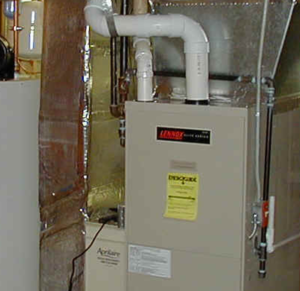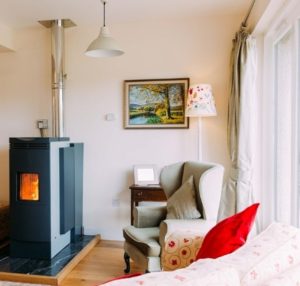With another long Colorado winter quickly approaching, your home heating choices matter! Over half of home energy use in Colorado can go to heating your home. This means that it can cost a lot to stay warm. But even more important than heating efficiency is heating safety. Over 25,000 fires are associated with home heating units annually. Fortunately, there are many ways to achieve both energy savings and safety at the same time.
 Natural Gas and Propane
Natural Gas and Propane
Most Coloradans burn natural gas or propane to heat their homes. Ideally, gas and propane heaters have a dedicated source of fresh air to ensure “complete combustion.” Incomplete combustion produces carbon monoxide – a potentially deadly, odorless gas.
- Combustion heaters that don’t have a dedicated source of fresh air depend on more haphazard access to fresh air from the outside (i.e. from a nearby crawlspace, garage, or cracks and gaps in the home).
- If your combustion heater doesn’t have a dedicated source of fresh air, it’s important to understand that air sealing near these heaters can actually cause incomplete combustion.
- All combustion heaters should be properly vented and inspected regularly for safety and efficiency.
Always have functioning smoke and carbon monoxide detectors placed in smart locations throughout your home!

Wood
Wood heat can offset the need to burn fossil fuels in a home. However, care must be taken to keep all potential sources of fuel like paper, clothing, bedding or rugs at least three feet away from stoves or fireplaces. Have wood stoves, fireplaces, and chimneys professionally inspected and cleaned once a year.
- For fireplaces, use a glass or metal fire screen large enough to catch sparks and rolling logs.
- Fireplaces should never be left unattended, and make sure any embers in the fireplace are extinguished before going to bed or leaving home.
- Note that fireplaces are an extremely inefficient way to heat a home and should just be used for ambiance. However, fireplace inserts can work almost as efficiently as wood stoves if installed properly.
Electric Heaters
Portable space heaters can heat just the space you are occupying, reducing the need to keep the entire home heated unnecessarily. However these units have received scrutiny because of their fire risk. High efficiency portable space heaters use electric elements to heat a liquid like oil that can actually store some heat and provide a more constant heat source. Safe, efficient units will also incorporate a thermostat to control the temperature and will be sized appropriately for the space you want to heat. The safest models will shut off automatically if the temperature gets too high or if the heater falls over. Many heaters also have tight grates to keep small fingers from reaching the heating element.
- When selecting a portable space heater, only purchase an electric (non-combustion) unit with an Underwriters Laboratory (UL) certification to ensure that it meets current safety standards.
- When using a portable electric space heater, first inspect it for cracked or broken plugs/cords or loose connections before each use. If frayed, worn or damaged, do not use the heater.
- Plug space heaters directly into a wall outlet – do not use an extension cord or power strip, which could overheat and result in a fire. Do not plug any other electrical devices into the same outlet as the heater.
- These heaters should be used on a level, hard, and nonflammable surface (such as ceramic tile floor), not on rugs or carpets or near bedding or drapes.
- Keep children, pets, and potential fuel sources away from space heaters and never leave them unattended.
Households in need of help to pay for safe home heating can contact their local weatherization assistance program, LIHEAP, or Energy Outreach Colorado. You might also inquire with a local energy service provider about getting a home energy audit that includes combustion safety testing.
Explore additional CSU Extension heating resources on the YourEnergy website.

